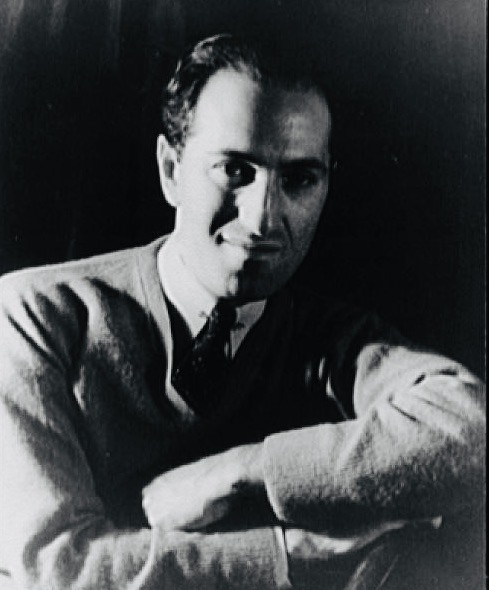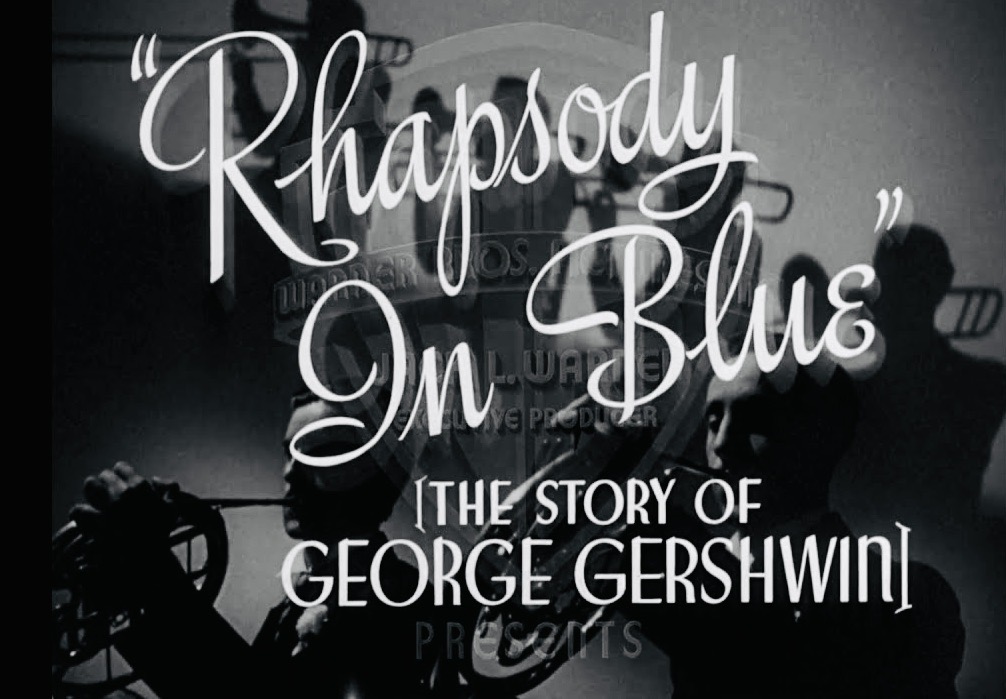Irving Rapper’s feature film, Rhapsody in Blue, is a paean to the legendary American Jewish composer and songwriter George Gershwin. It was broadcast on the Turner Classic Movies channel recently.
An energetic drama and a buoyant musical by turns, this sleek 1945 production was panned by some observers, including the critic of The New York Times. Having read his tepid review, I almost skipped the film. Fortunately, curiosity got the better of me and I sat through it. I was totally engaged by its undimmed passion and, most of all, I was impressed by its non-stop repertoire of amazing Gershwin hits from the 1920s and 1930s.
As a character study, it leaves something to be desired. Gershwin, as keenly portrayed by Robert Alda, is something of a cipher. We are not privy to his private thoughts and feelings. What we do know is that he’s ambitious, driven and remarkably gifted. His restlessness may have been rooted in his sinking feeling that time was not in his side, which turned out to be true.
Gershwin, who was born in New York City in 1898, died in 1937, his life cut short by a brain tumor. By then, he was at the height of his powers, having composed a body of work marked by genius. Piano concertos such as Rhapsody in Blue and Concerto in F. Symphonies like An American in Paris and Cuban Overture. The folk opera Porgy and Bess. And a captivating cascade of brilliant songs ranging from Swanee to I Got Rhythm.
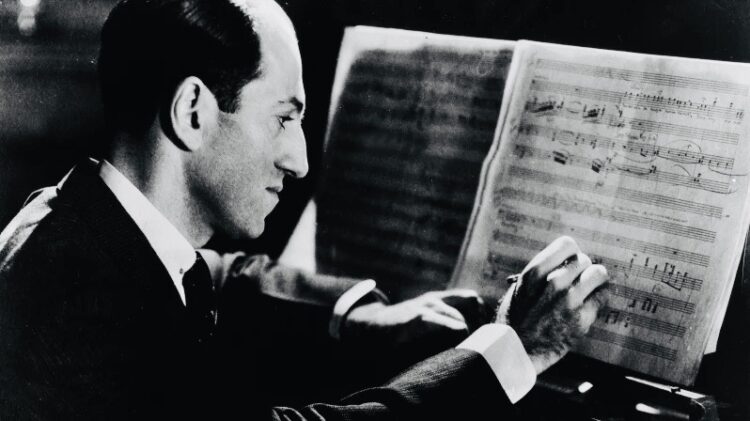
In this hugely entertaining film, Gershwin is almost always near a piano, his instrument of choice. In the opening scene, a boy with a cap, the young Gershwin, runs his fingers along the keys. And moments later, a new piano is hoisted up to his parents’ upper level apartment in a Lower East Side tenement. “The house needs music,” explains his mother Rosa (Rosemary De Camp). “I’ve made up my mind. A piano … is a sign of culture.”
Certain their son is talented, Gershwin’s parents hire an old European teacher, Franck (Albert Basserman), to refine his technique. Franck hopes he will study the classics and become a concert pianist. But Gershwin wants to be a composer of popular music.
Animated by this desire, Gershwin lands gigs as a pianist at a vaudeville theater and then as a song plugger. An admirer who hears one of his songs offers him a compliment, saying the song has “the smell of originality.”
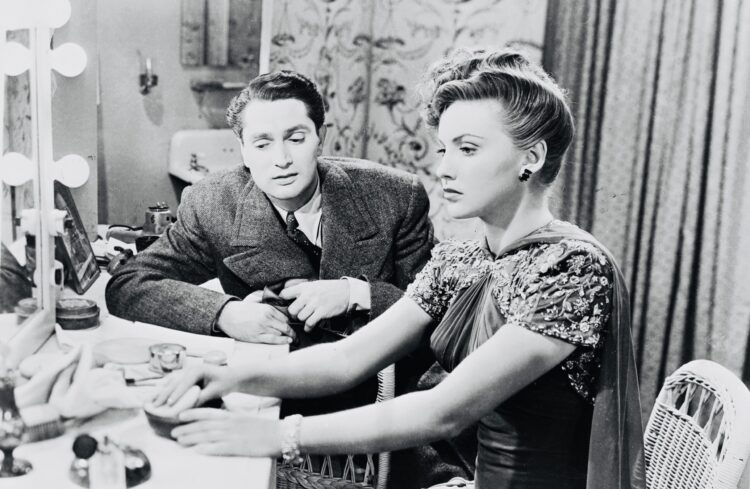
In a pivotal scene, an up-and-coming singer, Julie Adams (Joan Leslie), belts out his newest number, Swanee. She likes it, but Katzman, his embittered employer, fires Gershwin. Morris (Morris Carnovsky), his father, gently advises him to find a “regular” job.
Nonplussed by his sacking, Gershwin meets the seasoned music publisher Max Dreyfus (Charles Coburn) and wins him over with a medley of newly composed songs. Dreyfus gives the newcomer a two-year contract at $35 a week.
Al Jolson, playing himself in blackface, is bowled over by Swanee, which he proceeds to perform exuberantly at a concert the audience laps up. “Write more songs like that and you’ll be up in electric lights,” Jolson gushes.
Franck, in vain, implores Gershwin to focus on classical music.
Adams, played to perfection by Leslie, runs into Gershwin again at his Broadway play, Half Past Eight, which the critics dislike. Adams not only comforts Gershwin, but advises him to slow down lest he “burn himself out.” Their relationship is supposed to be romantic, but it appears platonic.
Gershwin’s brother, Ira (Herbert Rudley), who often wrote his lyrics and who is referred to as Mr. Words, comes off as a minor figure.
Paul Whiteman, the band leader, and Oscar Levant, the pianist who befriended Gershwin, play themselves as well. Whiteman persuades Gershwin to write a “serious concert piece” based on the blues, and he obliges with Rhapsody in Blue, a game changer in American music. “A very important piece,” observes Gershwin’s father in an understated but apt comment.
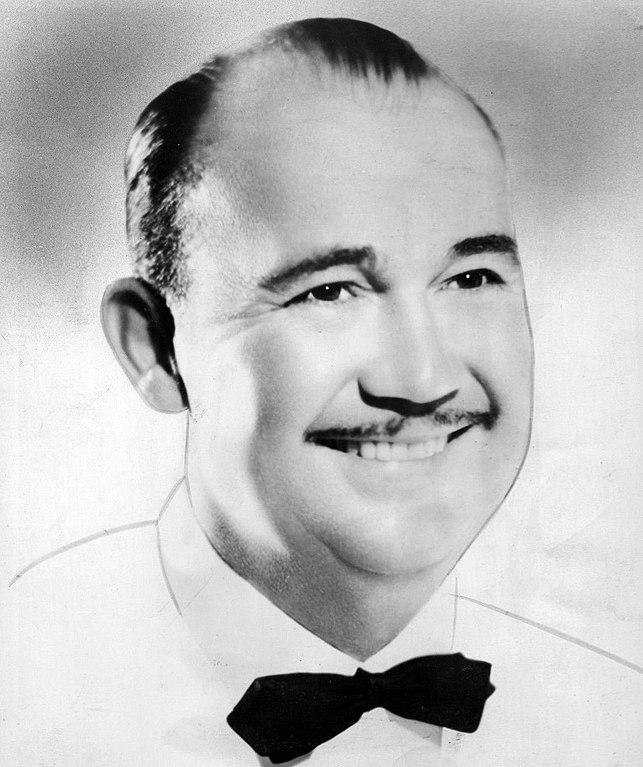
Gershwin decamps in Paris and there he encounters Christine Gilbert (Alexis Smith), a ravishingly beautiful American painter. He falls in love with her and proposes marriage. Although smitten, she is sure he’s the “perfect bachelor” and draws back.
In New York, Dreyfus advises Gershwin, a workaholic, to “relax” and be “a human being again.” By this juncture, Gershwin is plagued by recurring bad headaches. He continues to work incredibly hard, as if he realizes the end is near. As he performs the Concerto in F, he is stricken by a blinding headache and hand tremors. He collapses in his apartment, and in the words of the syndicated newspaper columnist Walter Winchell, Gershwin is “dangerously ill.”
I can’t vouch for the authenticity of the plot, but it certainly carries a viewer along in its wake.
In a stirring scene, the enchanting melodies of Rhapsody in Blue fill the screen as Whiteman conducts the orchestra and Levant performs on the piano.
This cinematic tribute to a remarkable American is appealing and should be savored.
